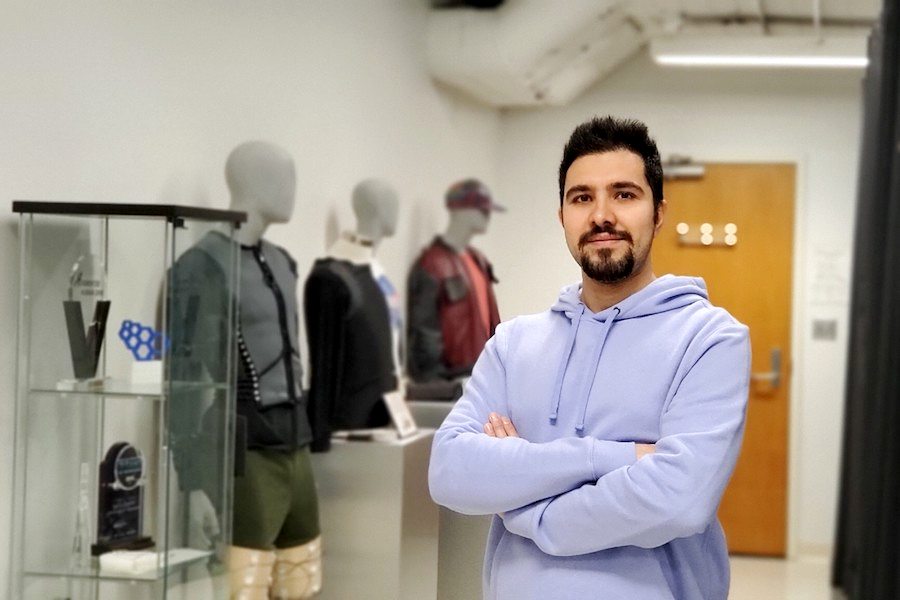
He’s not a spoon-bending magician, but graduate student Alireza Golgouneh can induce metals to change shape by themselves.
He works with metal-based materials called shape memory alloys (SMAs), which can be bent, stretched or otherwise deformed and then return—at various rates—to their original shape when prompted by, for example, temperature changes or electricity.
In fact, you may have experienced an SMA called nitinol—short for nickel-titanium—up close. After being molded to a patient’s teeth, braces made with nitinol wires begin to slowly resume a straighter shape in the warm environment of the mouth.
A graduate student in the College of Science and Engineering’s (CSE) Department of Electrical and Computer Engineering, Golgouneh specializes in incorporating SMAs into clothing. He coaxes garments into applying pressure in the right places—in items like compression sleeves, when veins in the legs need support; “tourniquets” for an athlete’s knee or arm; or a “wearable exoskeleton” for people who need help moving their arms and shoulders.
“Compression devices can be very practical for many different applications,” Golgouneh says. “With medical therapy, for example, if your doctor tells you to apply ‘x’ amount of pressure for treatment for your disease, you can do that yourself without a visit to the hospital.”
Pressurizing in outer space
Golgouneh’s work also could find application in the aerospace industry, where there’s a need for good mechanical counterpressure suits to simulate the atmospheric conditions of Earth and help space-walking astronauts’ cardiovascular systems circulate blood.
While a graduate student in CSE, Golgoumeh does much of his work in the Wearable Technology Lab in the College of Design, where he trades ideas with researchers from many different fields. The lab also was what convinced him, after he had earned bachelor’s and master’s engineering degrees in Iran, that the U of M was a great place to seek a Ph.D. because he could indulge his interests in medical devices and the physiological applications of electrical engineering.
“One of the best things about studying here at the U of M is that faculty members in ECE are so passionate about and open to interdisciplinary projects and research,” he notes.
This story is adapted from an article on the College of Science and Engineering website.
- Categories:
- Science and Technology
- Apparel
- Wearable tech





